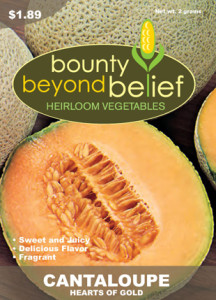Fall Gardening: Getting Ready
Preparing Your Garden For Fall
by Sandy Swegel
What a great time of year this is. And not just because the harvest is upon us and tomatoes are ripening and winter squash are filling out. It’s a great time because school is starting again and school supplies are in the stores bringing up great memories and nostalgia for the beginning of the school year. Sure we all hated summer vacation ending, but getting new pencils and notebooks and going back to school and seeing old friends was invigorating. The slight nip in the night air that starts in August in Colorado stimulates a new enthusiasm, much like a new year or a new chance.
Going into the garden in August is a lot like getting ready for school again. First, you have to get rid of the chaos and clutter of summer. We’ve been vacationing or sneaking naps in hammocks and somehow, the weeds we were carefully hoeing when they were an inch tall in May, have grown taller than us and have seed heads. So the first step of getting ready for Fall Gardening is taking a deep breath and clearing out the weeds and debris that might have snuck into the garden.
On Your Marks First, you have to be able to see your marks. Clear out the weeds that are choking things like the bindweed threatening to bring the corn to its knees. Pull out tough stalks of spring lettuce. They’re done…let them go! Those radishes that have been baking in the summer heat…time to recycle them into compost. Any place with diseased-looking leaves: clear out every last leaf to reduce the chances of trouble there in the future.
Get Ready. Get ready to meet old friends again…the cold-hardy or cool season crops. These are all the sturdy plants that don’t mind a morning freeze. Swiss Chard and Kale or Spinach can be frozen solid on an October morning and be perfect for dinner that night. The secret to having fresh vegetables in the Fall and long into winter is to plant while the soil is warm so that the plant is full-grown by frost. After it gets cold, plants don’t grow very quickly, but the garden will keep them ready to eat for months. Get ready to plant a big garden. It’s not the end of a garden season, but the beginning of one.
Get Set. Make a plan. Think about how many salads you’ll want (or how many pounds of greens you bought last year.) For greens, you want two general different kinds: the soft sweet salad greens that will last you until hard frost and the sturdy kales and chards and collards that will be good for cooking. The local farmers call it a “braising mix” that you can pick and stir-fry well into winter. Don’t forget carrots. This is also time to make a plan if you want a cold frame or want to set up a row cover to extend the season.
Go. It’s just like Spring again…only this time your mind isn’t gaga over a million possible gardens. So focus on the task at hand—growing enough food for you and your family and friends to eat all Fall and Winter. Prepare the soil. Dig out big weeds. Mix in compost or organic fertilizer. Smooth the surface. Water thoroughly. Let the soil sit for two weeks for soil activity to restore itself. Order the seed you don’t have. Try something a little different like the Asian greens or just something new. They should arrive by the time your soil has rested. Plan a season extender. You can stretch your fall garden into January or February even if you live in a cold place. You can use a cold frame, a hoop house, some row cover or just bags of Fall leaves thrown over plants on extra cold nights.


